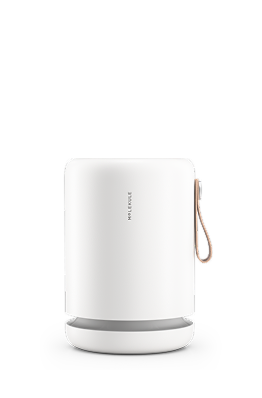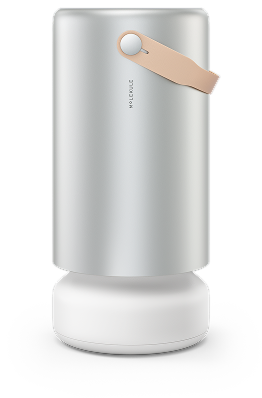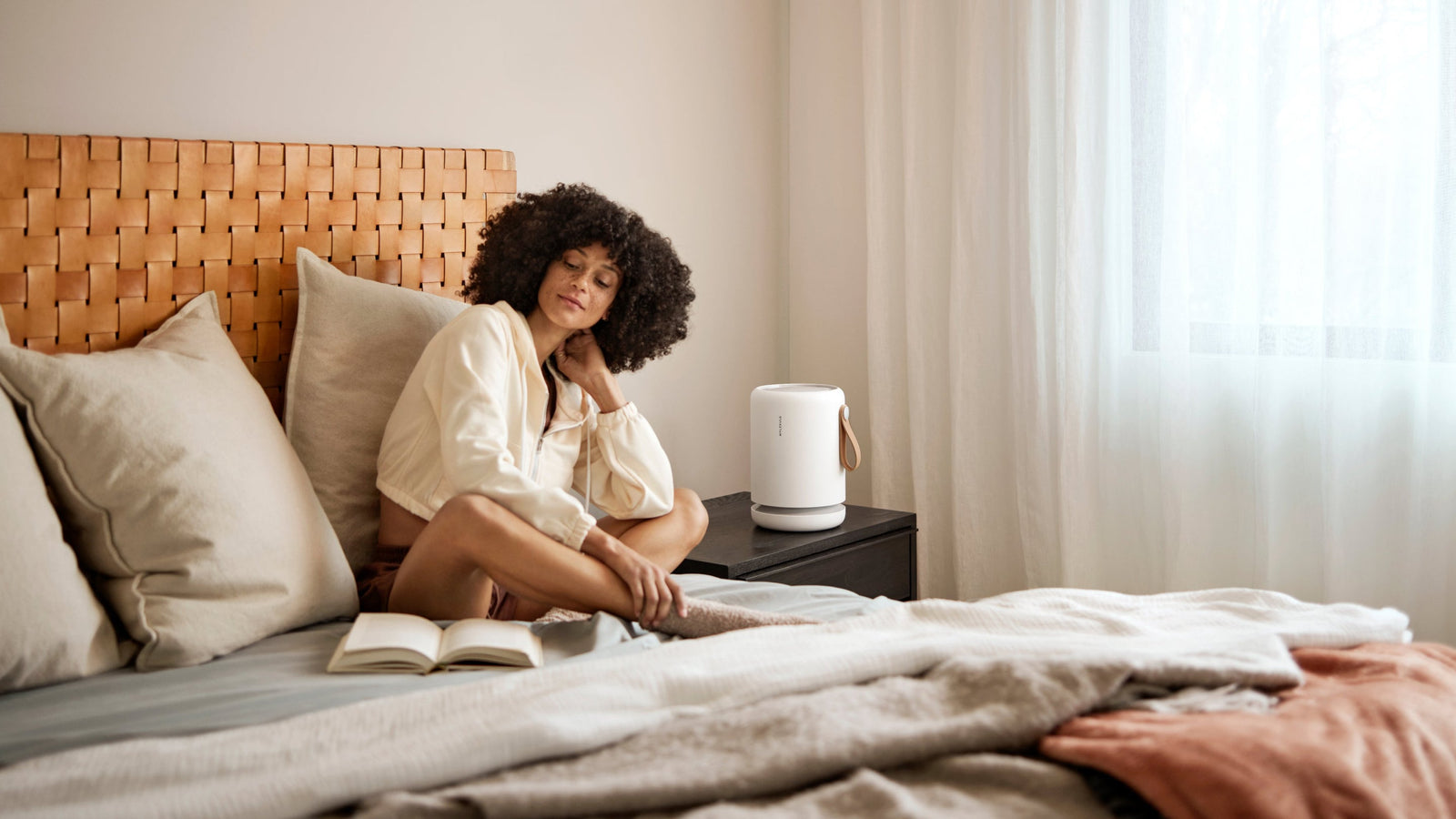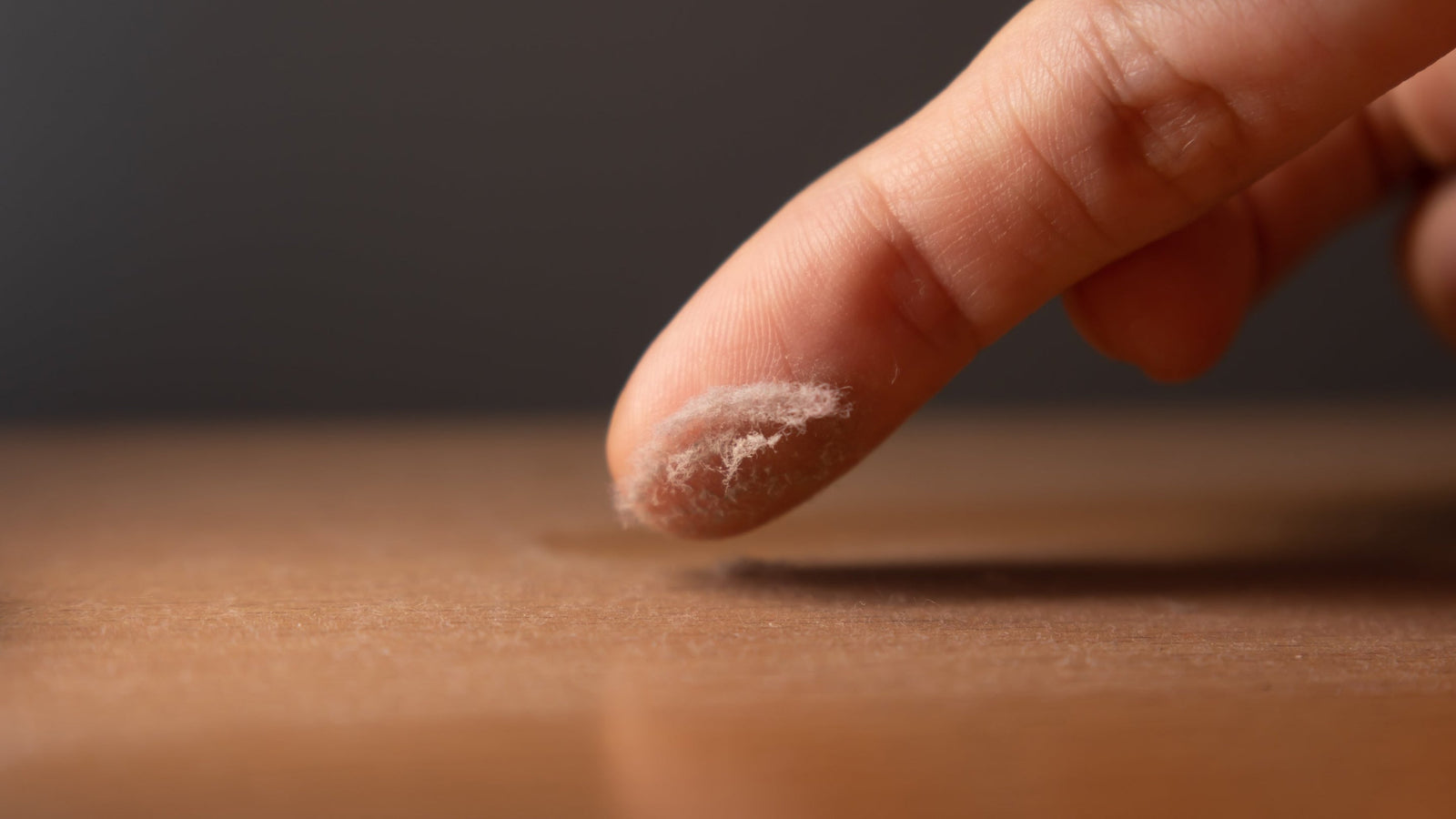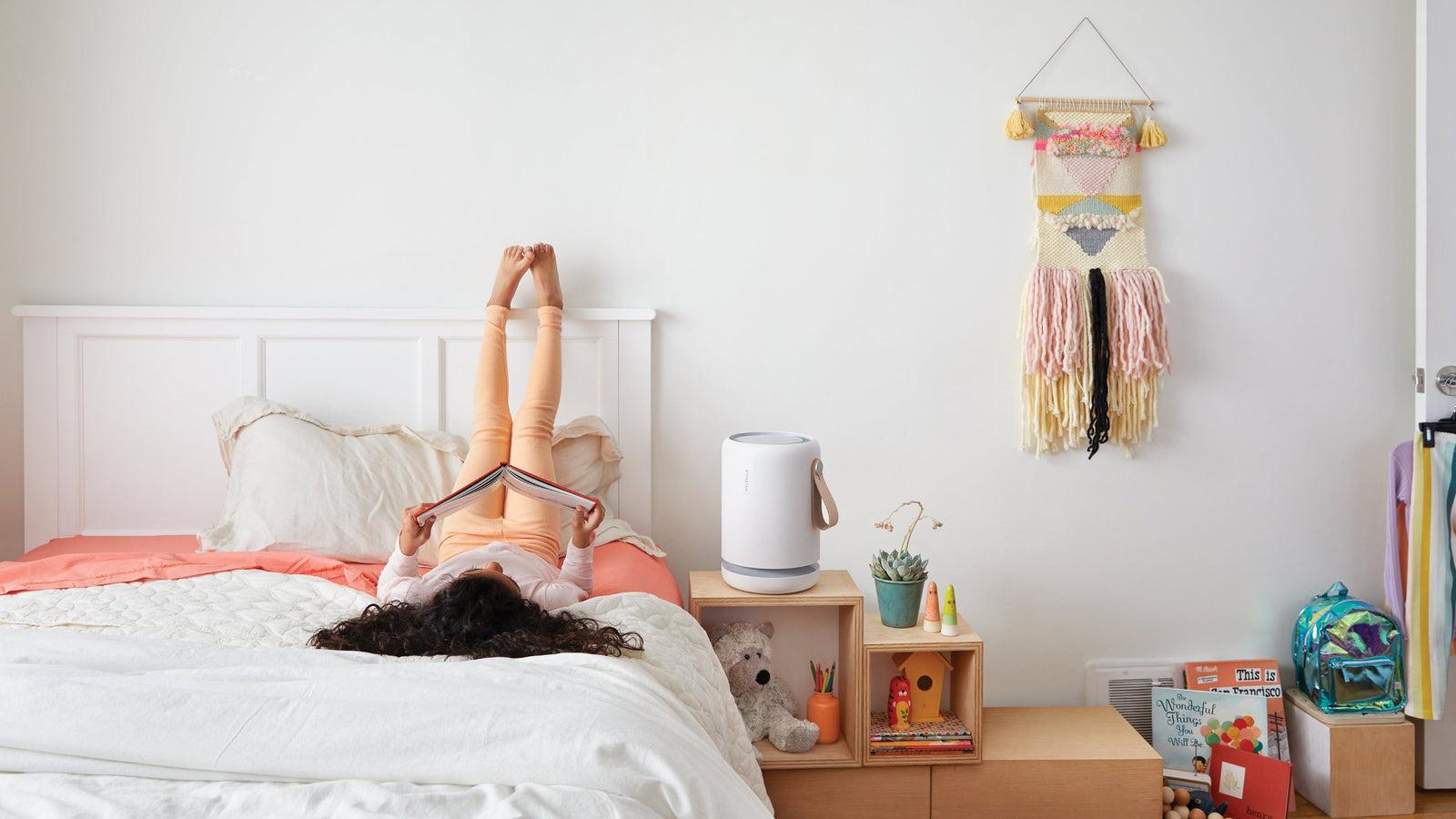If you’re researching what air purifier is the best option for your home, the first step is learning how an air purifier works. Understanding the different types and benefits of air purifiers and how they remove pollutants from the air will let you make an informed buying decision. Let’s look at the pollutants in your home’s air — particulates, VOCs, and more — and find out more about them. And if you’re wondering, “Does the Molekule really work?”, we’ll answer that too.
Air Purifiers and Indoor Air
Imagine a single room in your house. It has a specific volume of air inside it. Some air escapes or enters through the doorways to other rooms or through the windows. Even with the windows closed, no house is perfectly air-tight. However, in general, an air pollutant in that room can stay there unless you take specific steps to remove it. Also, if the source of the pollutant remains in the room, the pollution levels will continue to build, and the air quality will continue to drop.
It’s important to understand the source of the pollutants so you can determine what type of air purifier to use. This will help you eliminate the source when possible. Stopping pollution at the source is the most effective way to improve indoor air quality, when possible.
Here are some common pollutants and their sources:
- Dust and dust mites – Dust is continually produced by regular processes like skin cells sloughing off, dirt introduced from outside, and the breakdown of everyday items like clothing or carpets. Dust mites are tiny relatives of ticks that feed on the proteins in those skin cells that humans and our pets shed constantly. Their secretions and fecal matter are pollutants and allergens. A mechanical filter, like a HEPA filter or the filter used in a PECO filter, will remove dust.
- Pet dander– Dogs and cats shed skin and fur, and they can cause an allergic reaction in people who are sensitive to them. Like dust, these particulate pollutants can be removed by a HEPA filter or the filter in a PECO air purifier.
- Mold spores – There are mold spores everywhere, but if you have a mold problem in your house, the mold emits a much higher concentration of spores. At increased concentrations, mold spores can trigger allergic reactions in sensitive people. While some molds do produce toxins known as mycotoxins, according to a study in the Journal of Allergy and Clinical Immunology, it’s unlikely that inhaling mold spores in your home would expose you to high enough levels to cause a toxic reaction. However, the role of mold spores in allergic reactions and aggravation of asthma symptoms is enough reason to consider them a serious pollutant. A filter with HEPA filter can remove them, but a filter that also has PECO destroys mold spores using a photocatalytic reaction.
- Particulates from burning – Wildfires, a fireplace or woodstove, cooking, or smoking cigarettes all release particulates into the air. The exact composition of the particulates varies depending on what’s being burned, but they can trigger allergic reactions, asthma symptoms, or even create toxic compounds. A mechanical filter can remove most particulates from burning.
- Volatile Organic Compounds – Commonly known as VOCs, these are chemicals released into the air. They are not particulate pollutants, they are gaseous. Sources include fires (including wildfires, or from cooking or smoking), off-gassing by consumer products made from certain plastics, paints and solvents, and cleaning products. VOCs can be made up of hundreds of different chemicals, but common ones include benzene, toluene, xylene, ethylbenzene, according to a study in the International Journal of Environmental Research and Public Health. A carbon filter, or a filter capable of breaking down organic compounds, is necessary to remove VOCs.
Indoor vs. Outdoor
Why is controlling your indoor air quality so important? There are two reasons why. First, the Environmental Protection Agency (EPA) reports that Americans spend 87 percent of their time indoors. Whatever pollutants are in your indoor air, you’re being exposed to them for most of the day, every day. Second, indoor air pollutants build up when they have nowhere to go and aren’t being removed. Remember that volume of air in a single room of your house? If there is a pollution source in it — such as a pet or a lit cigarette — the pollutants can build and build, creating a higher concentration within that room. It will eventually reach levels that can trigger allergic reactions, asthma, or other respiratory symptoms.
Because of this, the outside air is almost always cleaner than the indoor air. There is an immense volume of air outside, so pollutants do not typically reach high concentrations. That’s why opening a window to increase ventilation generally improves indoor air quality. There are important exceptions, of course: if you live downwind of a coal plant or ongoing wildfire, near heavy car traffic,, or during allergy season, you might need to close windows to keep extra pollutants from entering your home.
Even an open window (which isn’t always possible) can’t always replace enough air in your home to remove all the pollutants. That’s why an air purifier is often a crucial part of improving your indoor air quality — it removes pollutants from the air that otherwise may continue to build and build.
Types of Air Purifiers and How They Work
Not every air purifier can remove all types of pollutants. Some air purifiers are specialists, very good at removing one type of pollutant. Other purifiers combine different technologies as a way to target multiple pollutants. Very few air purifier technologies can effectively remove all pollutant types from the air.
- Mechanical filters – The most common air purifiers are used to remove particulate pollutants from the air. They use filters made of paper or another fabric. Air is passed through the filter, and the particles are trapped in the weave of the filter, letting clean air out the other side. Filters with more tightly woven material, and those using folded material to increase the surface area of the filter tend to trap more particles. HEPA filters (high-efficiency particulate air) are a specific kind of filter designed to conform to a U.S. Department of Energy standard. HEPA filters must be able to trap 99.97 percent of particles of 0.3 microns in size or larger. Mechanical filters are not effective at removing VOCs from the air.
- Carbon filters – Filters using some form of carbon, including activated charcoal, rely on the chemical properties of carbon and certain additives and coatings to trap VOC molecules. Carbon has numerous “slots” where chemical molecules can attach, like keys fitting into keyholes. This process is called adsorption. Carbon filters are good at removing VOCs from the air, although because of the massive variety of different VOCs that might be present, a particular carbon filter might not be effective in every situation. These types of filters are not effective at removing particulate pollutants from the air.
- Ionizers – Ionizing air purifiers impart an electric charge to particles that pass through them. The particles are then attracted to other particles with the opposite charge, or to surfaces with the opposite charge. Particles sticking together like this increases how much they weigh, causing them to settle out of the air. As a result, you’ll find the floor and nearby furniture or curtains coated in the pollutants, typically clumps of dust and grime. Some ionizers have a charged plate to attract the particles. These need to be cleaned often. Ionizers are not effective at removing VOCs from the air. Perhaps the biggest problem with ionizers is that the electricity involved creates ozone as a side effect. The EPA considers ozone a pollutant — at certain levels it can cause respiratory problems and trigger asthma symptoms, especially when allowed to build up in an enclosed area.
- Ozone generators – These air purifiers intentionally create ozone. As stated above, ozone is a pollutant. You may have heard of ozone being used to disinfect or purify buildings by professional cleaners — this is done under controlled conditions, using a large amount of ozone, and allowing all the ozone to fully disperse before humans are allowed back into the room. It isn’t a safe technology to use in your home.
- PECO – Air purifiers using PECO technology, such as those made by Molekule, use a mechanical filter to trap particulate pollutants. However, the filter fibers are coated in a photocatalytic substance. When exposed to the UV-A light inside the filter, this coating produces a chemical reaction that destroys organic compounds and molecules, including VOCs, mold spores, bacteria, and viruses. Does the Molekule really work? Independent studies have shown that PECO technology destroys VOCs and reduces overall contaminant levels, including ozone.
Understanding the different types of pollutants in your home helps to show the strengths and weaknesses of different types of air purifiers. And looking at how air purifiers work will let you make an informed decision when it comes to purchasing the right kind of air purifier for your family.
